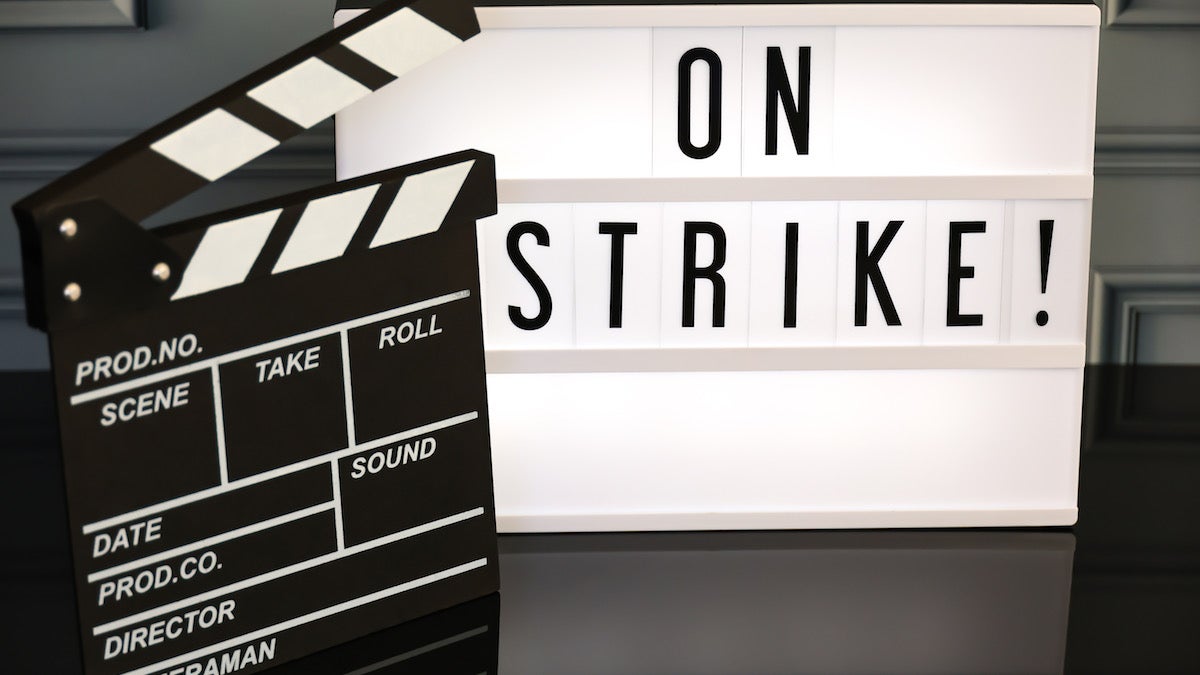
You are reading an exclusive WrapPRO article for free. Want to level up your entertainment career? Click here to subscribe.
The WGA strike is now nearing the 150 day mark. And while negotiators for the WGA and major media companies have come together again to further the conversation, but an end to the double strike is uncertain — especially as negotiations with SAG-AFTRA are still to follow. As protests on the picket lines continue, writers and actors are feeling the financial pressure. The strike is a direct response to the vice grip the studios have over the creative process, and as union workers fight for their livelihoods and their fair share, the “strategy” of the studios has been to wait out the clock or “break the WGA” as one studio executive so callously put it.
Right now, the studios’ endgame is to hold out until the people on the picket lines run out of money and give up. But what if there is another way?
The last time the WGA and SAG-AFTRA were on strike together was in 1960, a decade that opened the door to independent filmmakers like Akira Kurosawa, Jean-Luc Godard, Stanley Kubrick, Alfred Hitchcock and Werner Herzog. Fast forward past the big-budget blockbusters of the 1980s to the 1990s, when smaller, more independent studios like Sony Pictures Classics, Searchlight, Miramax, Focus Features and Castle Rock Entertainment gave way to a golden age of indie cinema. This decade brought us directors like Gus Van Sant, Richard Linklater, Quentin Tarentino, Nicole Holofcener, Wes Anderson and Spike Lee.
Now, more than ever, we’re poised for another era of indies with Hollywood leaders and actors like Mark Ruffalo on the picket line encouraging the return, and roughly 250 independently financed films now added to the SAG-AFTRA waiver list. Indie films aren’t just great stories, they are stories that can also be made more efficiently and affordably. So at a moment when the studios are behaving as though they hold all the cards and using technology as a threat to creators, what if we look beyond the fear this narrative instills and instead use this moment to see all the ways in which technology can actually be used to replace the big studios?
As a member of the WGA who voted in favor of the strike, I see the problems with technology (i.e. AI replacing writers and actors) but I want to encourage my fellow guild members to also see how technology can be used to our advantage.
Here’s my message to all creatives, and stay with me because this might sound blasphemous, but the studios are completely unnecessary. For independent organizations, technology has lowered the barrier to entry to produce, distribute, and connect content to its proper audience like no other time in history. Technology can also be used to connect fans directly to writers and creators to enable a more equitable revenue share. In recent years, fans have more power around what gets made than ever before because their voices are being heard on social media and online fan platforms. Just think about shows like “Arrested Development,” “Longmire” and “Brooklyn 99” that were canceled by a network only to find a second life after the petition of passionate fans. After all, shouldn’t the people paying ever-rising monthly subscription fees have a say in what they’re watching? Technology provides an opportunity to engage audiences early and directly, developing fans and followers from the time a project launches.
By stepping up and embracing a new entertainment model, we can bring down the barrier to entry on the entire creative process on everything from distribution, marketing, finance and production and flip Hollywood’s legacy system on its head.
The future of the industry is making the lens through which we see the filmmaking process bigger, not smaller. By zooming out and democratizing film and television, the industry will not only grow, but be able to tell more of the stories the world wants — and needs — to hear.
So perhaps the studios should take pause and be more reflective about their position — because we all know, there will always be audiences demanding good content and if technology will empower the creative community to cost effectively produce, market and distribute to their audience directly — then what will we need the studios for?
For all of TheWrap’s WGA strike coverage, read here.
















